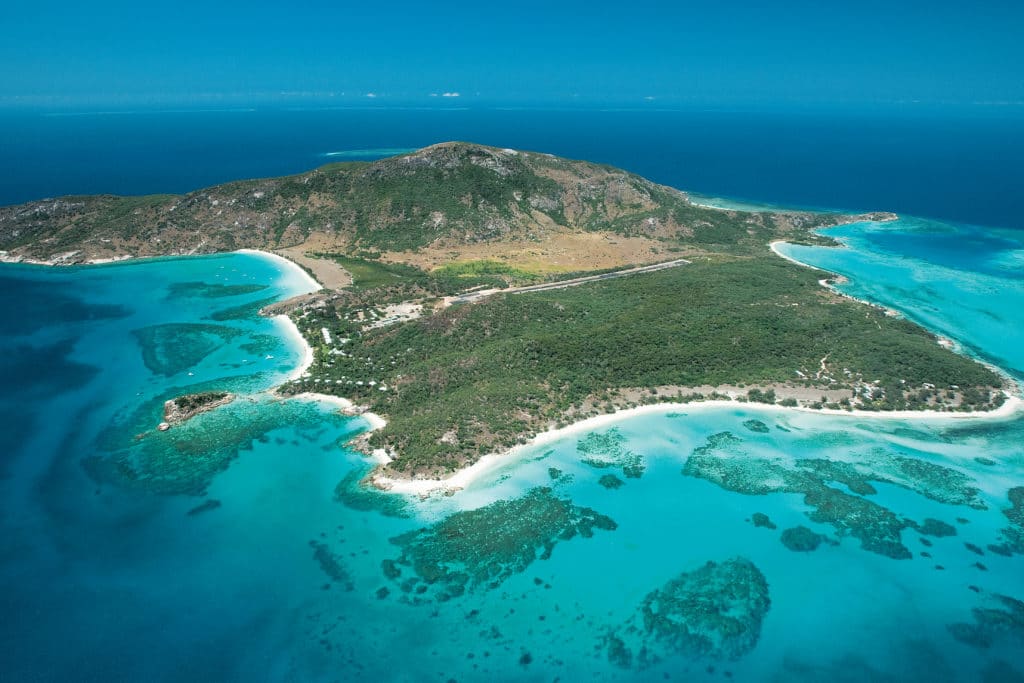
Grander Ground Zero
Situated 155 miles north of Cairns, Australia, the magnificent Lizard Island has become famous for three major attractions: one of the world’s best, secluded five-star resorts; fabulous reef diving; and, certainly, the world’s best black marlin fishery. For many years now, Lizard Island has been the base for big-game anglers challenging giant black marlin along the Great Barrier Reef. From Lizard, it’s only a short run out to the famous Ribbon Reefs, where hundreds of granders have been caught and released over the years. Every spring, the prolific Coral Sea experiences a huge aggregation of all kinds of game fish, including black marlin varying in size from tiddler hundred-pounders to half‑ton monsters.
Back in the late ’60s, when the first marlin boats from Cairns started venturing up the Great Barrier Reef to Lizard Island, the place was totally uninhabited. In 1970, the Queensland government built an airstrip on the island and a few years later set up a scientific marine research station. Work on a small, boutique resort also began in the mid-70s, and while the builders had their construction equipment on the island, they were asked by one of the Cairns captains to build a much-needed gantry to weigh their record-breaking giant black marlin.
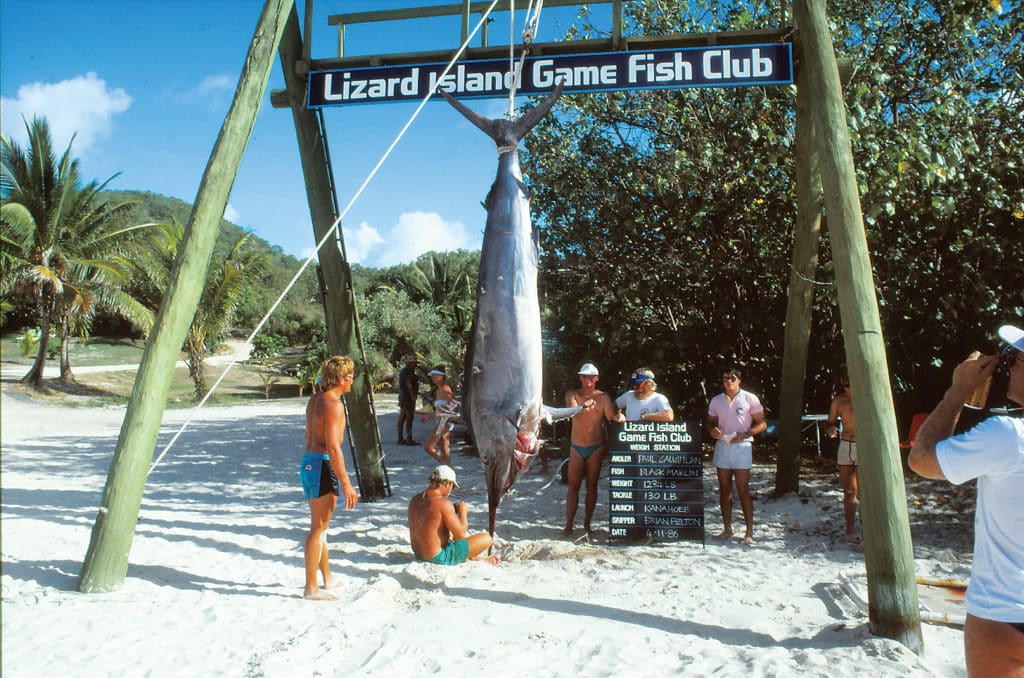
This request was made by none other than legendary Capt. Peter Bristow, and he met with a guy by the name of John Wilson, head of the company building the resort. Wilson put Bristow in touch with their architect, and between them, they drew up a rough plan for the gantry in a bar at the Brisbane Airport. Bristow suggested telegraph poles would be perfect because they would be long enough and strong enough to hold a 17-foot-long marlin. The construction was completed in time for the 1979 heavy-tackle season, and it was ideally built on the beach close to the lagoon waters where the game boats could gain close access.
I’ll never forget my first trip there in the late ’70s. That trip began my obsession with heavy-tackle angling. Back then, aboard the old 15-knot boat Avalon, it seemed a long trip from Cairns compared to today. By the time we arrived, it was quite late in the evening. The abundance of fish in the lagoon was unbelievable, and it was very easy to catch some of the best eating reef fish for dinner before the resident 600-pound cod and giant trevally moved in. They stole everything we hooked and destroyed all our light tackle. (This was prior to Lizard being designated as a Great Barrier Reef Marine Park.)
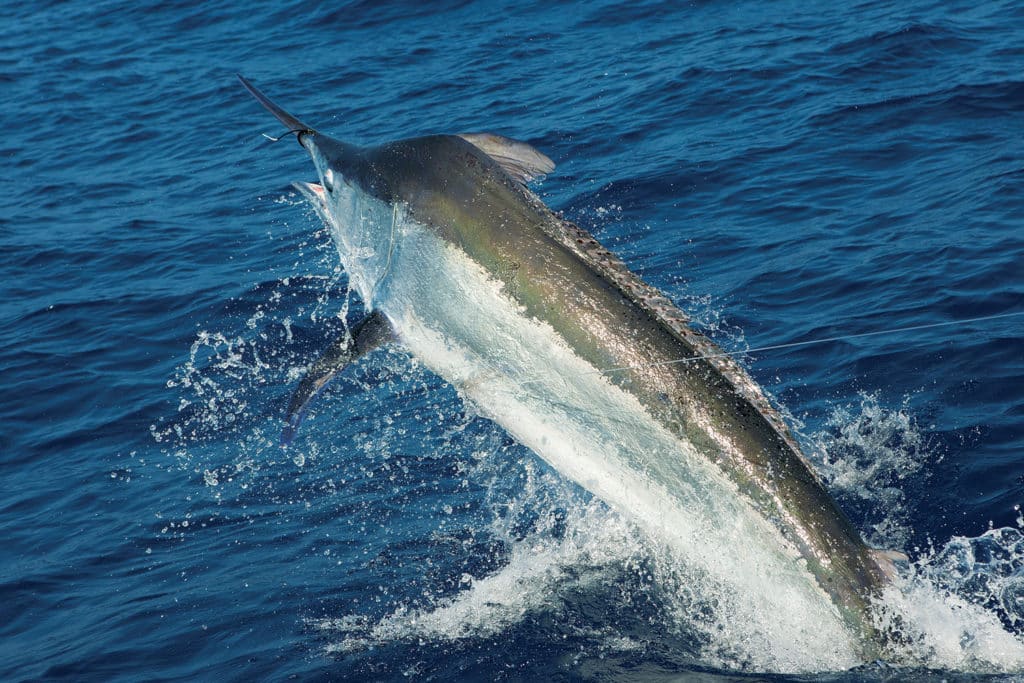
The famous Number 10 Ribbon Reef, one of 10 magnificent sections of reef running to the south of Lizard, stretched out right in front of us. I’d heard so much about this particular reef. Seeing its beauty and immense size for the first time seemed overwhelming. Number 10 sprawls completely unbroken for over 20 miles. Trolling down its eastern edge, there were times when we’d be in 100 fathoms, yet still in earshot of the rumbling Pacific swells breaking on the glistening coral. I was told these giant black marlin often feed right up in the shallows, and when we hooked our first 600-pounder, we could actually see the bottom. It was mind-blowing stuff!
Even more astonishing, though, was what happened an hour later when a school of 15- to 20-pound yellowfin tuna busted up all around us. We didn’t even get a chance to hoist the line up the rigger when the rubber band stretched to the limit and snapped. The tuna bait had disappeared down the throat of a very large fish.
For all of us inexperienced anglers on the deck, the bite was absolutely frightening, and Bristow screamed out, “She looks a definite grander!” The hole in the ocean where she ate the bait looked like a small car had been dropped in the water, and I just stood there gobsmacked. When the big mother came leaping 20 feet out of the water, I couldn’t believe her size; that first jump is still etched in my brain, even though it was 39 years ago. We broke wire on that beast after an hourlong fight, but it’s that monster that has kept me going back to the Great Barrier Reef and Lizard Island every season since.
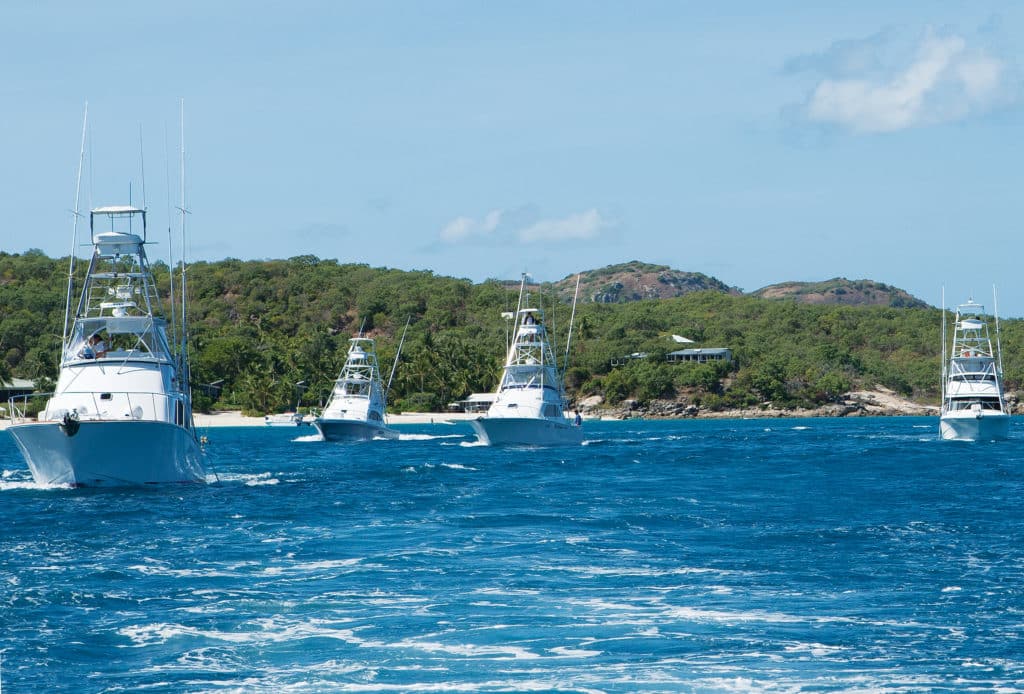
By the early ’80s, a number of anglers and boat captains had discussed the prospect of starting a game-fishing club on the island because of its unique location. Longtime visitor to the island and avid big-game angler Alan Turnbull said to me once, “There’s nothing on earth like Lizard Island, and if ever there was a place to have a great fishing club, it would be here.” And he was dead right. Along with Turnbull, Bob Lowe, Johnno Johnson, John O’Brien and Peter Goadby founded the Lizard Island Game Fishing Club in spring 1985.
When the news broke about the club, many anglers from here and overseas_ were thrilled to be part of it, and in ’86, the first heavy-tackle Black Marlin Classic Tournament was held. This inaugural event was won by none other than Bristow on Avalon, and it was quickly discovered by many competitors that the name “Black Marlin Classic” said it all. No other marlin tournament in the world could boast the sheer number of giants caught off Lizard. It didn’t just happen way back then, either; it’s been going on now for 28 years.
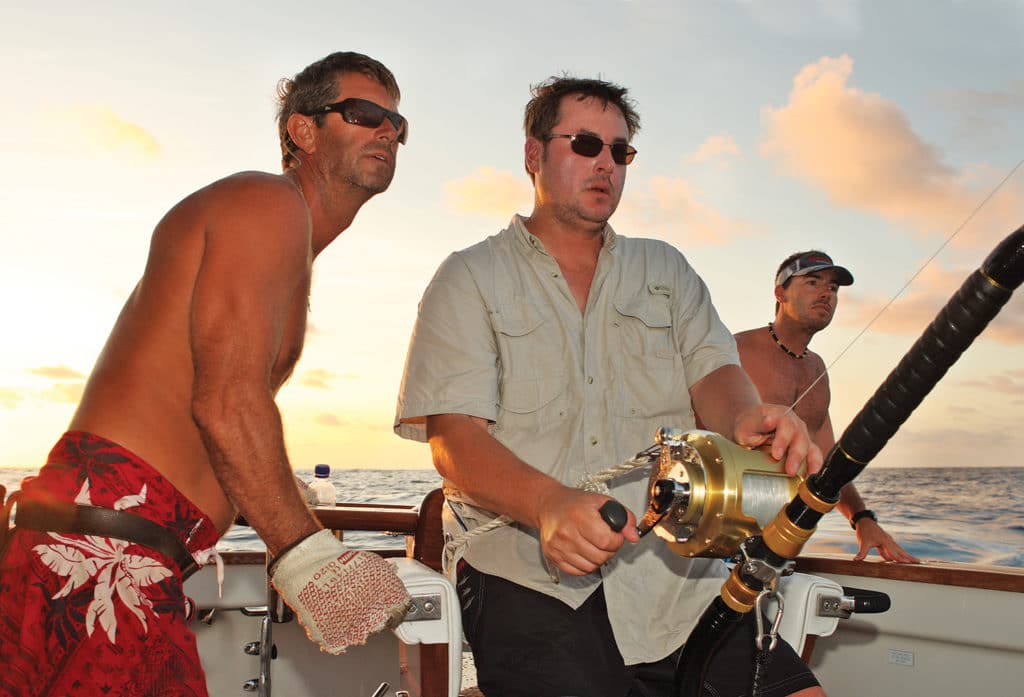
The Lizard Classic became a standout for heavy-tackle anglers the world over. Because of the size of the marlin experienced, the 130-pound-tackle-only rule they instituted all those years ago continues today. In the early days of the Classic, anglers who captured their biggest-ever black were able to bring the beast back to the island to be weighed. In 2001, the biggest black ever weighed in the history of the Classic was presented to the weighmaster. The monster stretched the certified scales to 1,278 pounds. Back in those days, there was a trophy for the heaviest marlin captured in the tournament.
Around the turn of the century, though, many changes unfolded in our game-fishing world, and the perception of killing any large game fish started to be frowned upon. Dwindling fish stocks became regular news; the introduction of circle hooks to try to protect these fish even further became popular, and it was mandatory in some cases. It soon became the norm to release any large game fish, preferably with a tag in it. In the case of billfish, better tags and applicators were developed and more and more satellite tags were introduced into the Classic to track these giant marlin as well.
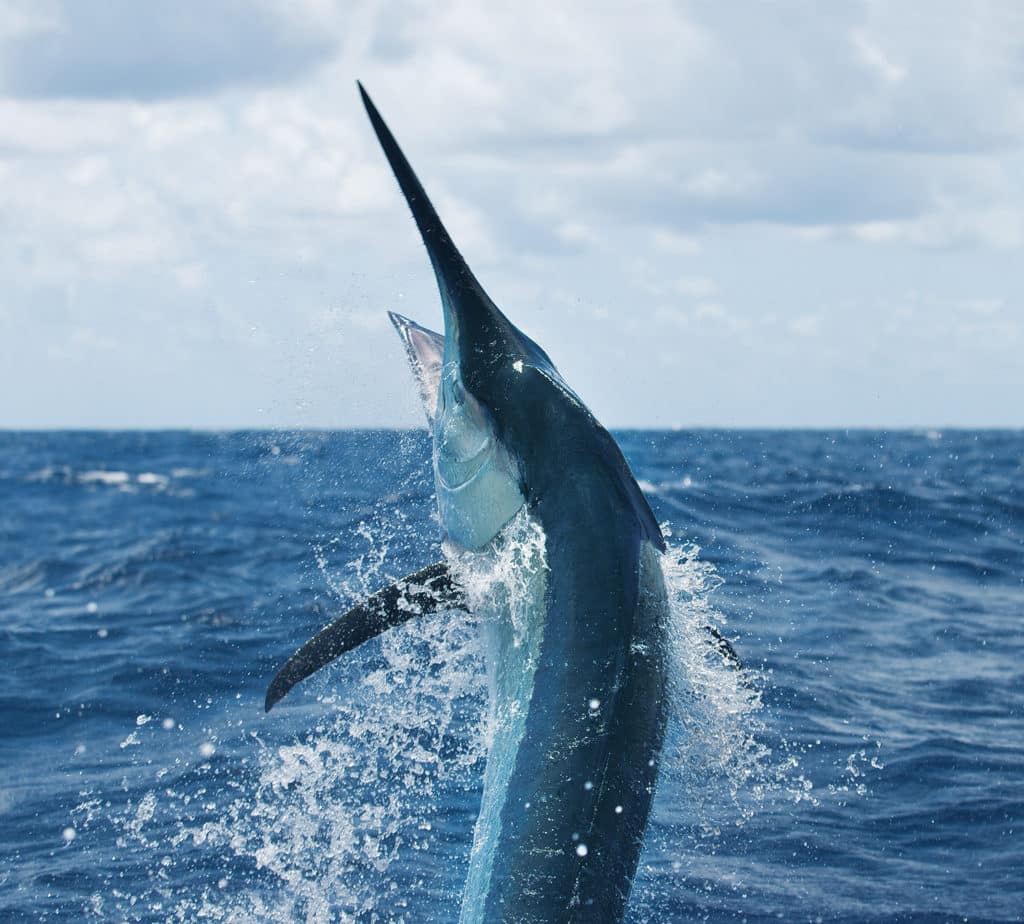
In 2005, the Club’s long-serving president, Bob Lowe, decided it was time to stop killing these large marlin, even though there had been a minimum weight of 450 kilograms (993 pounds) in place for many years. On top of this, there was always a general understanding among the captains that if a grander-plus was weighed early in the tournament, no marlin estimated under that weight would be killed. The old gantry was eventually torn down as a respect for the tag-and-release, no-kill policy.
To replace the tournament’s “heaviest marlin” trophy, the committee introduced a prestigious award for those anglers who tagged and released a grander during the Classic. The introduction of the Grander T&R Club was well-received by the members, and 38 anglers have qualified since it began in 2005. The rules to join this elite club were drawn up to make it very precise, and a signed affidavit, along with a clear and accurate photograph of the grander before release, had to be presented to the committee for consideration.
The 2014 Classic was another huge success, even though the club had to temporarily vacate the island’s facilities and stage the briefing and presentation functions on the mainland at nearby Cooktown. A fierce category-four cyclone had blasted a destructive path right across the island during the earlier summer months, destroying most of the resort, as well as damaging the famous barn where all the club’s functions are held. The move actually made quite a spectacle for this sleepy little country town, and all the locals embraced the tournament held there. The Cooktown dock and the banks of the Endeavour River were lined with hundreds of local and visiting spectators to witness the start of the Classic with a brilliant sail-past from all of the competing vessels.
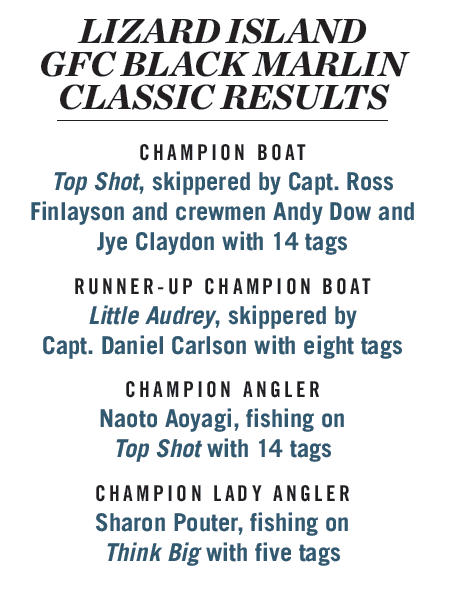
The run from Cooktown to the middle of the Ribbon Reefs takes about an hour or so, and it wasn’t long before the radios were crackling with the first hookups. Last year’s winner, Capt. Ross Finlayson on Top Shot, was on a mission, but the first big fish he hooked unfortunately jumped off. The first grander to be released came from Capt. Luke Fallen on Kekoa, which turned out to be one of five monsters over the magic mark to be taken during the tournament. As the days slipped by, Finlayson really got in the hunt and ended up tagging 14 blacks to take out the Classic for the third year in a row, an amazing achievement.
The overall results of this seven-day tournament were, as per usual, spectacular to say the least, with 126 black marlin tagged and released. Out of these, 30 were big mamas over 800 pounds. In recent years, the Classic has been part of the IGFA Great Marlin Race, and all 26 vessels were armed with satellite tags. These sophisticated tags, worth around $5,000 each, were donated by the Bertarelli Foundation and Stanford University, and all of them were deployed into large black marlin either during or just after the tournament. These tags will certainly yield some important information in the months to come.







